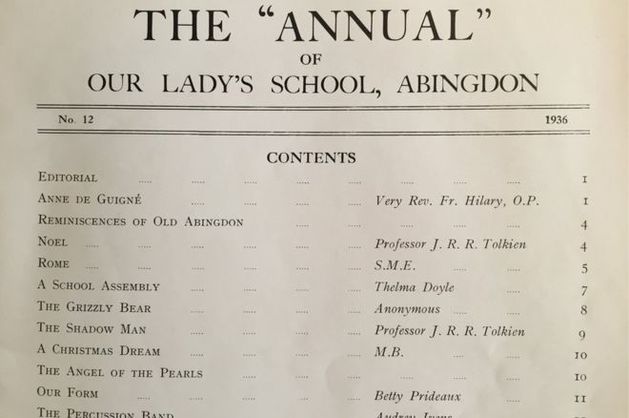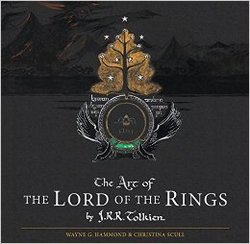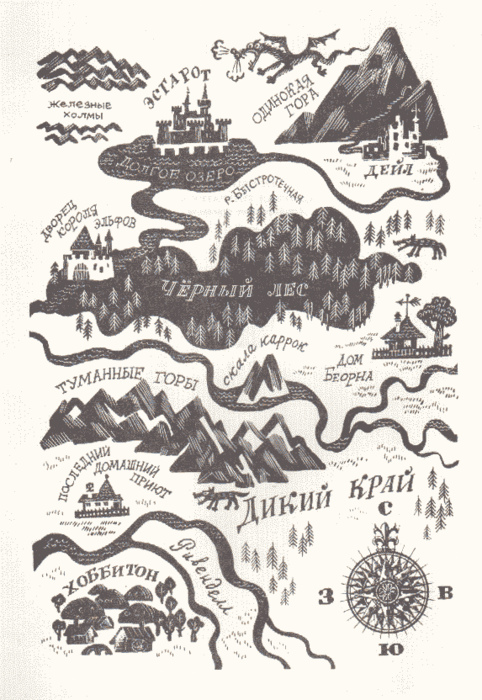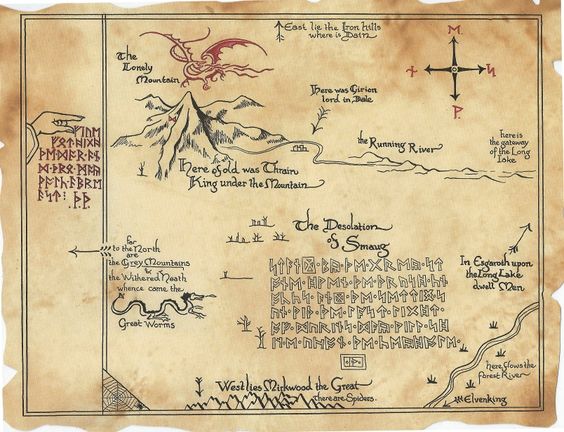 Exciting Tolkien news today. Two lost poems by Tolkien have been found. They were originally published in the obscure annual magazine of an Oxfordshire Catholic high school in 1936—an odd place for an Oxford Don to publish his work. However, Tolkien was not a professional poet, but an Anglo-Saxon scholar. His poetry, old fashioned and out of step with the high modernism of Eliot and Pound, would not have been picked up by the top literary journals. But clearly Tolkien valued it enough and believed in it enough that he wanted to see it published even in an obscure place. Also, the poem “Noel,” about the Virgin Mary, is deeply Catholic. What better place to share it than with a Catholic religious community dedicated to Mary. I like “Noel” very much. The first line: “Grim was the world and grey last night” gives the poem an alliterative Anglo-saxon flare. The description of the wintery world of the first two stanzas has much of The Wanderer and the Sea-farer in it. If the poem looks backward with its wistful romantic style to a Catholic medieval world, it also looks forward to the eucatastrophe. Tolkien was not just a man with his head turned to the past. He was always interested in uniting past and present and thereby redeeming the present. I have printed "Noel" below and here are the Guardian article and the BBC article about the poems’ discovery. NOEL Grim was the world and grey last night: The moon and stars were fled, The hall was dark without song or light, The fires were fallen dead. The wind in the trees was like to the sea, And over the mountains' teeth It whistled bitter-cold and free, As a sword leapt from its sheath. The lord of snows upreared his head; His mantle long and pale Upon the bitter blast was spread And hung o'er hill and dale. The world was blind, the boughs were bent, All ways and paths were wild: Then the veil of cloud apart was rent, And here was born a Child. The ancient dome of heaven sheer Was pricked with distant light; A star came shining white and clear Alone above the night. In the dale of dark in that hour of birth One voice on a sudden sang: Then all the bells in Heaven and Earth Together at midnight rang. Mary sang in this world below: They heard her song arise O'er mist and over mountain snow To the walls of Paradise, And the tongue of many bells was stirred in Heaven's towers to ring When the voice of mortal maid was heard, That was mother of Heaven's King. Glad is the world and fair this night With stars about its head, And the hall is filled with laughter and light, And fires are burning red. The bells of Paradise now ring With bells of Christendom, And Gloria, Gloria we will sing That God on earth is come.
33 Comments
 It just arrived in the mail. My own copy of The Art of the Lord of the Rings by Wayne G. Hammond and Christina Scull. Their earlier book, J. R. R. Tolkien: Artist and Illustrator, was invaluable to me as I was doing my research for John Ronald’s Dragons. The book itself is beautiful: square shaped to match the square pieces of graph paper on which Tolkien sketched many of his preliminary maps. And this book is full of maps, from rudimentary squiggles on the back of discarded index cards to elaborate three color topographical masterpieces. It is also full of script. For those of you contemplating a tattoo with the ring inscription, you can choose from a whole variety of drafts photographed in this book. As a Tolkien lover, I am interested in maps and script and what they have to do with each other. And as a children’s writer I am interested in how learning to read maps is an exercise in literacy. In Maphead Ken Jennings points out that “a good map isn’t just a useful representation of a place; it’s also a beautiful system in and of itself” (7). As someone who studied linguistic systems, Tolkien would naturally be drawn to mapping. When the narrator of The Hobbit says of Bilbo, “ He loved maps, and in his hall there hung a large one of the Country Round with all his favourite walks marked on it in red ink,” we can intuit that Tolkien was also speaking of himself. Cartophilia was yet another way in which Tolkien was a hobbit. Maps are at once concrete and abstract. They represent an idea of place and space, but the representation is in symbols that we must learn to interpret: triangles for mountains, squiggly lines for rivers, etc. etc.. Ken Jennings notes the attraction he felt for maps as a child and suggests “that many people’s hunger for maps (mappetite?) peaks in childhood.” A map at the beginning of a children’s book is a promise. It promises adventure, travel, discovery, the unknown. As Nicholas Tam points out in his excellent blog, they enhance the reader's immersive experience of reading.  A great deal has been written by academics about maps as cultural artifacts. And several bloggers and critics have noted the charming Russian version of Thror’s map in the Russian translation of The Hobbit as proof of the cultural specificity of maps. Tolkien hated it when translators of his works attempted to translate place names, and I suspect that he might have reacted to the slavicisation of his map at the beginning of The Hobbit as he reacted to the Dutch translation of place names in his works. In a letter to his publisher, he complained: “The toponymy of The Shire . . . is a ‘parody’ of that of rural England, in much the same sense as are its inhabitants: they go together and are meant to. . . . I would not wish, in a book starting from an imaginary mirror of Holland, to meet Hedge, Duke’sbush, Eaglehome, or Applethorn even if these were ‘translations’ of ‘sGravenHage, Hertogenbosch, Arnhem, or Apeldoorn! These translations are not English, they are just homeless.” Many people have written more eloquently about Tolkien’s maps than I. Here is a wonderful blog about fantasy maps with a detailed discussion of Thror's map. And here is a review of The Art of the Lord of the Rings from Wired Magazine. |
Caroline McAlisterCaroline is an avid reader, children's writer, and teacher. She lives in North Carolina with her husband and dog. Check out her bio for more! Archives
February 2024
Categories
All
|

 RSS Feed
RSS Feed